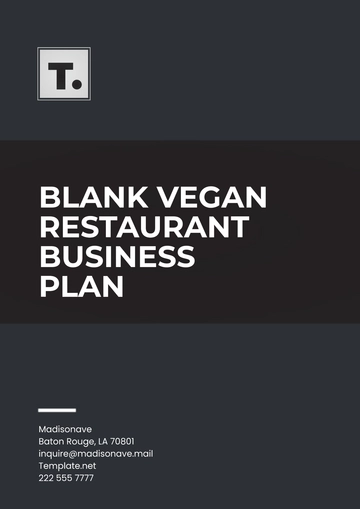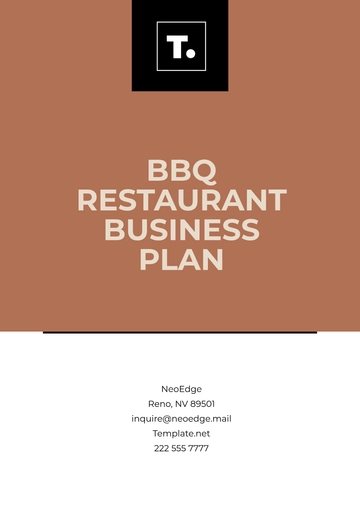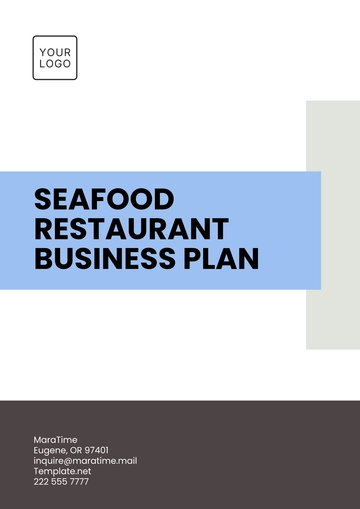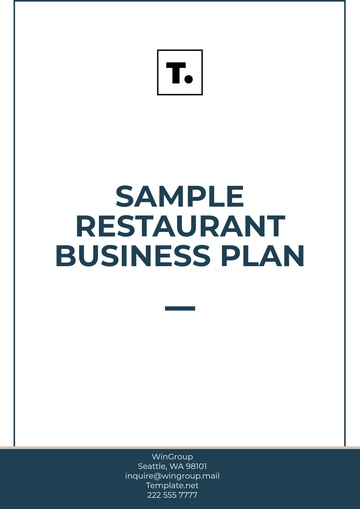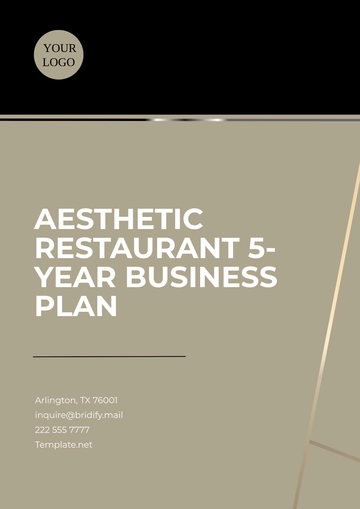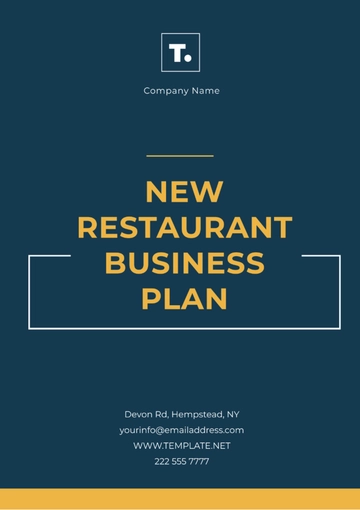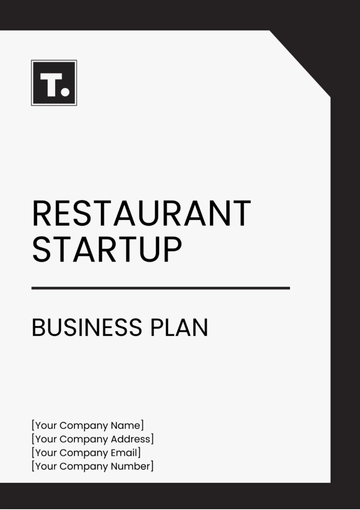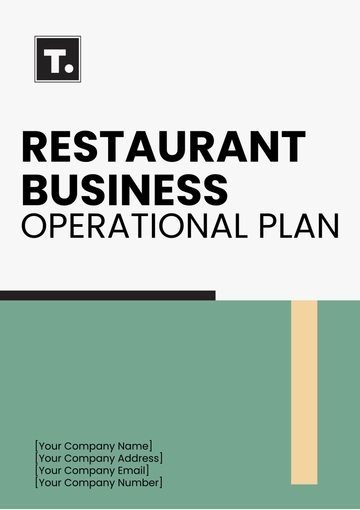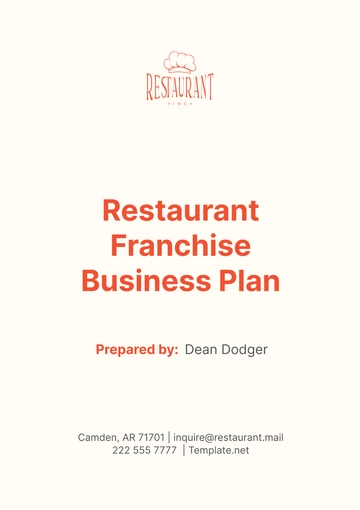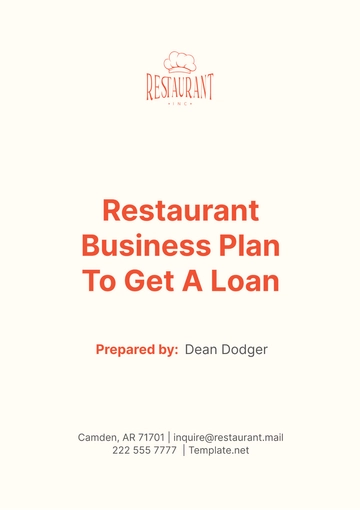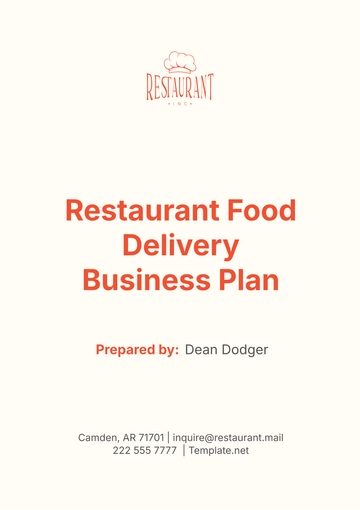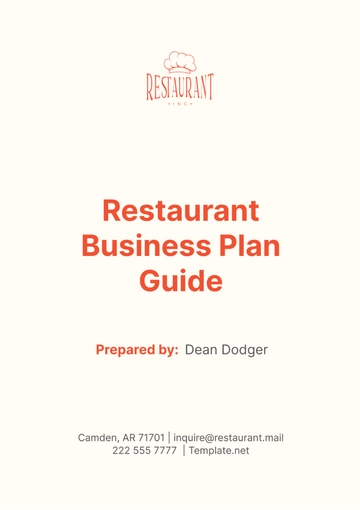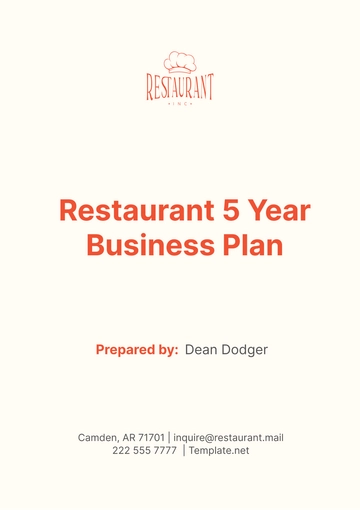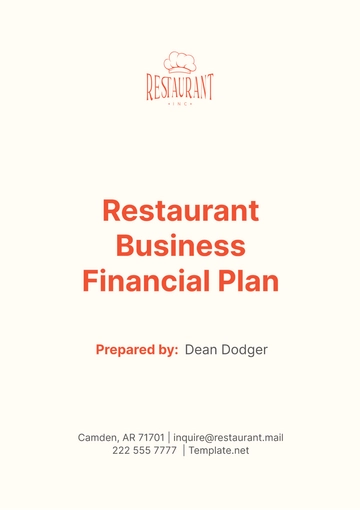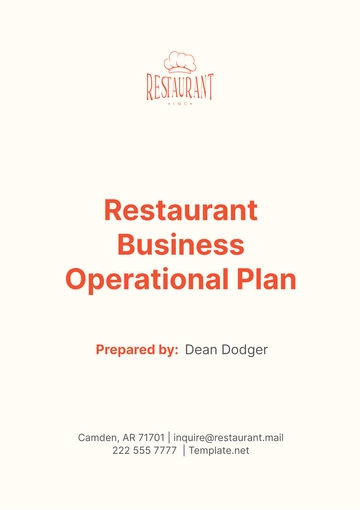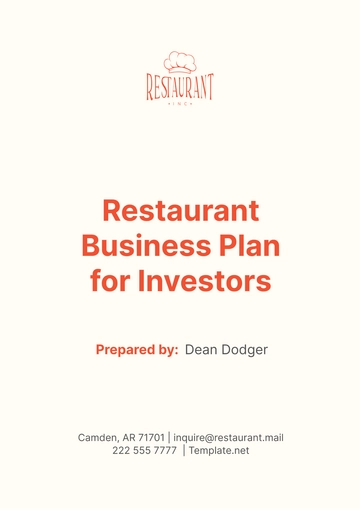Free Restaurant Business Plan for Investors
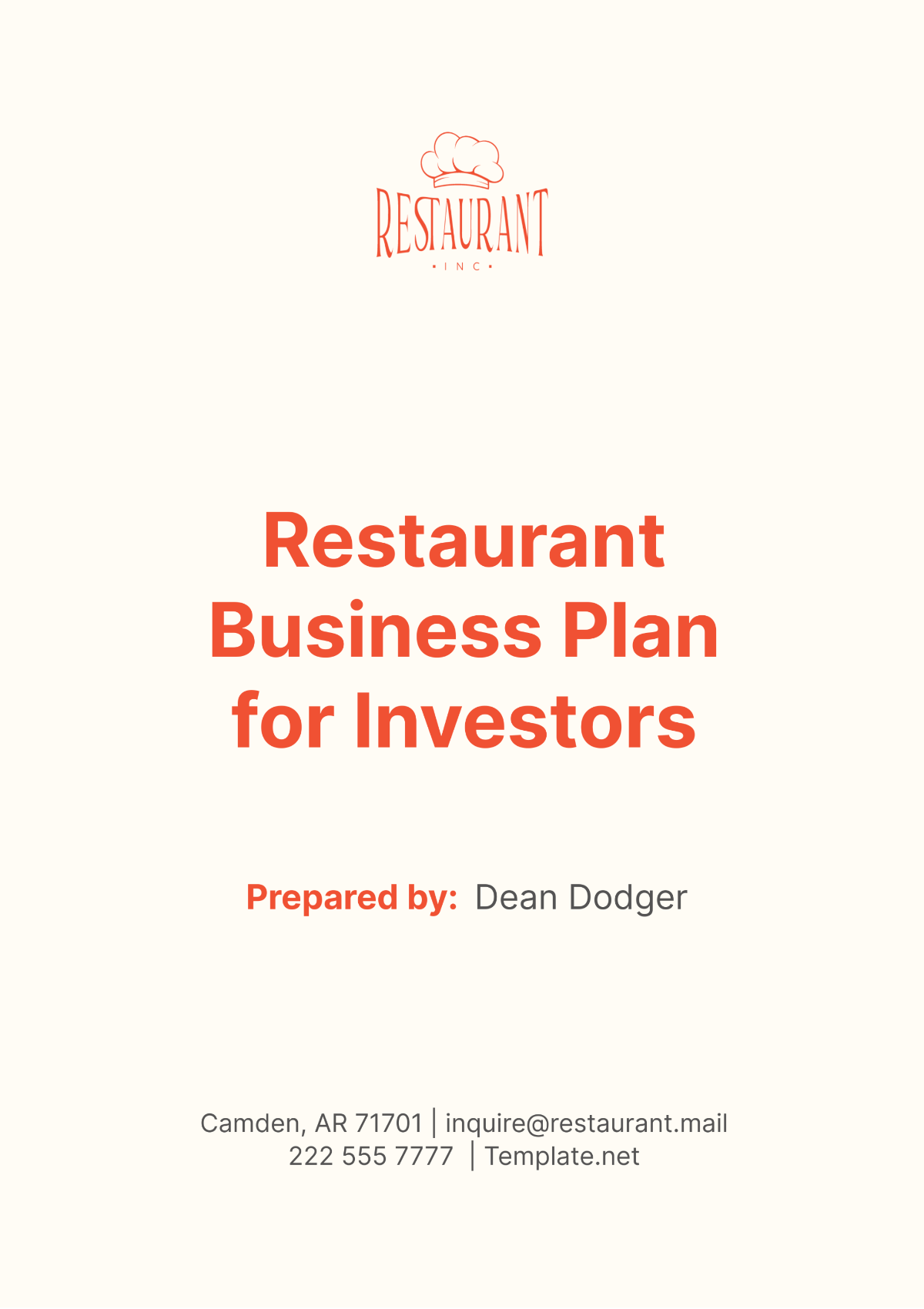
A. Executive Summary
[Your Company Name] brings the flavors of authentic Italian cuisine to the heart [Big City, Any State], offering [a cozy yet elegant dining experience, highlighting traditional dishes passed down through generations.].
Our target market consists of discerning food enthusiasts seeking an elevated dining experience. With a focus on fresh, locally sourced ingredients and handcrafted pasta made in-house daily, we cater to both local residents and tourists eager to savor the true taste of Italy.
Our competitive advantage lies in [our commitment to quality and authenticity. From our rustic décor to our attentive service, we create a warm and inviting atmosphere that keeps guests coming back for more]. We project strong financial performance, with estimated revenues of [$0] in the first year and steady growth thereafter.
To bring our vision to life, we are seeking an investment of [$0] to cover start-up costs, marketing initiatives, and operational expenses. Join us in revolutionizing the culinary scene in [Big City, Any State] and beyond.
B. Business Description and Concept
[Your Company Name] is a contemporary fusion restaurant located in the heart of [Big City, Any State], offering a unique blend of [Asian and Latin American flavors]. Our culinary concept is inspired by the vibrant street food scenes of [Tokyo and Mexico City], resulting in a menu that tantalizes the taste buds with bold and innovative dishes.
The ambiance of our restaurant reflects the dynamic fusion of cultures, with modern décor accented by traditional elements from both [Asian and Latin American] design. Guests can expect a [lively atmosphere with an open kitchen concept], allowing them to witness the artistry behind each dish.
Our target market includes [urban professionals and adventurous food enthusiasts seeking a dining experience that transcends traditional boundaries].
By combining the best elements of two diverse culinary traditions, we offer a truly one-of-a-kind experience that appeals to a wide range of palates. Our commitment to using fresh, locally sourced ingredients and our creative approach to flavor combinations set us apart in a competitive market, ensuring that every visit to [Your Company Name] is a memorable culinary journey.
C. Market Analysis
In this section, we delve into a comprehensive analysis of the restaurant industry landscape, local market trends, target demographics, customer preferences, and competitors. By understanding the market dynamics, we aim to position [Your Company Name] strategically to meet the needs and preferences of our target market effectively.
Aspect | Findings |
|---|---|
Restaurant Industry | The restaurant industry in downtown Los Angeles is thriving, with a diverse array of dining options catering to various tastes. |
Local Market Trends | There is a growing demand for fusion cuisine that offers unique flavor combinations and a culturally rich dining experience. |
Target Demographics | Urban professionals aged 25-45, with a higher disposable income and a penchant for exploring new culinary experiences. |
Customer Preferences | Customers prioritize freshness, innovation, and authenticity in their dining experiences, seeking bold flavors and creative dishes. |
Competitors | Notable competitors include established Asian and Latin American restaurants, along with trendy fusion eateries in the area. |
This analysis informs our strategy to position [Your Company Name] as a standout destination offering a dynamic fusion of [Asian and Latin American] flavors, appealing to the discerning tastes of urban professionals seeking a culinary adventure.
D. Marketing and Sales Strategy
At [Your Company Name], we have developed a comprehensive marketing and sales strategy to attract and retain customers, drive sales, and foster customer loyalty.
Branding Strategy: Our branding strategy focuses on conveying the fusion of [Asian and Latin American cultures] through our restaurant's name, logo, and visual identity. We aim to evoke a sense of excitement and curiosity, enticing customers to experience our unique culinary concept.
Advertising and Promotional Tactics: We will leverage a mix of online and offline advertising channels, including local publications, food blogs, and social media platforms, to create buzz around our restaurant. Special promotional events, such as tasting nights and themed dinners, will be organized to engage customers and generate excitement.
Online Presence: A robust online presence is crucial in today's digital age. We will maintain an informative and visually appealing website that showcases our menu, ambiance, and special events. Online reservations and delivery options will also be available to enhance convenience for customers.
Social Media Strategy: Social media platforms like Instagram, Facebook, and Twitter will be key tools in our marketing arsenal. We will regularly post enticing photos of our dishes, behind-the-scenes glimpses of our kitchen, and customer testimonials to engage with our audience and build a community around our brand.
Customer Loyalty Programs: To reward repeat customers and encourage brand loyalty, we will implement a customer loyalty program that offers incentives such as discounts, freebies, and exclusive access to special events. Personalized email newsletters will also be sent to subscribers with updates on promotions and new menu offerings.
E. Operations Plan
In this section, we outline the day-to-day operations of [Your Company Name], including staffing requirements, management structure, suppliers, equipment, and inventory management. Additionally, we provide details on the layout and design of the restaurant, hours of operation, and any unique features or amenities that contribute to the smooth functioning and success of our establishment.
Aspect | Details |
|---|---|
Staffing Requirements |
|
Management Structure |
|
Suppliers |
|
Equipment |
|
Inventory Management |
|
Layout and Design |
|
Hours of Operation |
|
Unique Features/Amenities |
|
This operational framework ensures efficient and seamless functioning, allowing us to deliver exceptional dining experiences to our valued customers at [Your Company Name].
F. Financial Projections
In this section, we present detailed financial forecasts for [Your Company Name], including income statements, cash flow projections, and balance sheets. Using realistic assumptions based on thorough market research and industry benchmarks, we outline start-up costs, operating expenses, revenue projections, break-even analysis, and return on investment (ROI) for potential investors. The line graph below illustrates our projected revenue and expenses over the first three years of operation, demonstrating the growth trajectory and financial viability of our restaurant venture.
The line graph depicts the financial projections for [Your Restaurant Name] over the initial three years of operation. It illustrates a consistent upward trend in revenue, from [$500,000] in the first year to [$1,200,000] in the third year. Meanwhile, expenses rise gradually, indicating prudent cost management. The increasing gap between revenue and expenses suggests a healthy financial performance and promising return on investment for potential stakeholders.
G. Funding Requirements and Use of Funds
In this section, we outline the funding requirements for [Your Company Name] and how we plan to allocate the funds raised from investors. We provide a breakdown of the investment needed for start-up costs, equipment purchases, leasehold improvements, marketing expenses, working capital, and other relevant expenditures. Additionally, we explain the potential returns investors can expect based on our financial projections and growth trajectory.
Allocation of Funds | Amount ($) |
|---|---|
Start-up Costs | $[0] |
Equipment Purchases | $[0] |
Leasehold Improvements | $[0] |
Marketing Expenses | $[0] |
Working Capital | $[0] |
Contingency Reserve | $[0] |
This allocation of funds ensures that [Your Company Name] is well-positioned for success, with sufficient resources to cover initial expenses and support growth initiatives. Investors can expect attractive returns as our restaurant establishes itself as a premier dining destination in [Big City].
- 100% Customizable, free editor
- Access 1 Million+ Templates, photo’s & graphics
- Download or share as a template
- Click and replace photos, graphics, text, backgrounds
- Resize, crop, AI write & more
- Access advanced editor
Discover Template.net's Restaurant Business Plan for Investors Template – your comprehensive guide to securing funding for your culinary venture. This editable and customizable template ensures clarity and professionalism in presenting your restaurant business plan. Tailored for impact, it's editable in our Ai Editor Tool, offering seamless customization. Attract investors with a detailed plan that highlights your concept, market analysis, financial projections, and growth strategies.
You may also like
- One Page Business Plan
- Coffee Shop Business Plan
- Restaurant Business Plan
- Food Business Plan
- Real Estate Business Plan
- Executive Summary Business Plan
- Cover Page Business Plan
- Nonprofit Business Plan
- Daycare Business Plan
- Construction Business Plan
- Startup Business Plan
- Medical Business Plan
- Bakery Business Plan
- Service Plan
- Hotel Business Plan
- Catering Business Plan
- School Business Plan
- Healthcare Business Plan
- Transportation Plan
- Sports Plan
- Car Wash Business Plan
- Salon Business Plan
- Clothing Business Plan
- Farming Business Plan
- Boutique Plan
